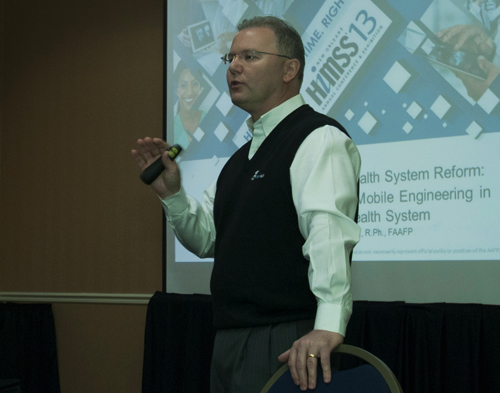
“While the theme of the conference remains mostly the same, the finale of a year’s worth of hard work, what we do hope to do is mature the event and the presentations that take place each year,” states Lean Program Director, Glenn Uminger. The conference he is referring to is the University of Kentucky’s Lean Systems Program, 2013 Users Conference, held on 10-11 September, 2013.
“While this conference is still in its infancy, what with 2013 being only its third year, we are greatly encouraged by the increase in attendance that we have witnessed compared to previous years,” Uminger explains. “Even more importantly is that we continue to see a growing number of strong examples of Lean applications being adopted by businesses from a wide range of industries.”
This increase in examples led to this year’s conference being typified by the sheer volume of rich and meaningful presentations that took place, each of which highlighted the success individuals and businesses have had when it comes to the implementation of Lean processes, and the subsequent results of this.
“There were certainly a number of key themes that consistently appeared during the conference,” Uminger highlights, “from the reinforcement of just how critical hands-on, decisive leadership is to Lean transformation to the importance of setting out a clear plan from the offset. Tying in to the latter point was the idea of enduring consistency, whereby companies must realise that adopting Lean is a test of endurance and one that requires flexibility and adaptability. Last, but by no means least, it is about people and aligning the behaviour and performance of people to your business’ plans.”
As one would expect, these themes helped make up the building blocks of some of the more impressive case studies showcased at this years’ conference. Two of the standout examples that immediately come to Uminger’s mind involve the healthcare sector, specifically the efforts of T.J. Samson Community Hospital and Dr William Thornbury.
In the case of T.J. Samson Community Hospital, what it has done is apply Lean thinking to the way in which it delivers patient care, both from a day clinic and overnight care perspective. Recognising the need to expand their operations, the hospital acquired an abandoned former Wal-Mart building and meticulously went about redesigning it into a dedicated clinic.
“What the hospital did,” Uminger says, “is compartmentalise the functions of the clinic to deliver a quick, fluid service to all who visit it, making the process of arriving, receiving treatment and leaving a streamlined one. The success of the clinic has also led to the main hospital itself being able to better clarify its own function, services and processes as well.”
As far as Dr Thornbury, whose brother Neil is in fact COO of T.J. Samson Community Hospital, is concerned, his presentation focused on how he has been using Lean thinking to deliver as much service to as many patients as possible. Dr Thornbury’s answer was to develop and implement a revolutionary e-visit service dubbed Me-Visit. Designed to strengthen the relationship between patients and their physician, Me-Visit helps patients connect with their medical provider using mobile technology.
“This device that Dr Thornbury has implemented allows his patients to contact him via their mobile device, upon which he can utilise his knowledge of the patient, their history and various symptoms to diagnose and prescribe treatment quickly and efficiently,” Uminger enthuses. “Furthermore, he can attach all the necessary documents and information about the diagnosis and treatment at the same time. What that essentially means is he is providing the patient with more information and support in a matter of minutes than would be achieved through a face-to-face visit. This is something that really encapsulates what Lean is all about and it is something that he is working to promote across the country.”
With the 2013 Users Conference only a matter of weeks behind us, thoughts have already turned to 2014’s event, occurring on 30 September and 1 October next year. “Our early hopes for next year’s event are that we will hear examples from our client companies that show a deeper penetration of Lean thinking and the use of broader applications that create great success stories,” Uminger reveals. “On top of this of course we would love to see attendance levels continuing to rise and we think a 25 percent increase on this year would be a good target for us to aim for.”
Turning back to the present day and all that Uminger has witnessed in the past several weeks, what he has seen has clearly given him even greater optimism about the future adoption of Lean processes throughout different sectors and industries.
“Like Lean itself,” he concludes, “the very adoption of the process is about constant improvement. In order to help facilitate this we continue to work with both our established and newer client companies tangibly, joining them out onsite or inviting them to our facility, and what we have seen gives us great encouragement. Long before we think about who will be presenting at next year’s conference we will be helping these companies to develop their implementation and practical application of the process. That will ultimately mean that next year we can not only look forward to hearing more mature examples from our previous clients, but also about the next generation of Lean success stories.”
Written by Will Daynes, research by Vincent Kielty
DOWNLOAD
 UniKent-AM-Manu-Dec13-Bro-s.pdf
UniKent-AM-Manu-Dec13-Bro-s.pdf












